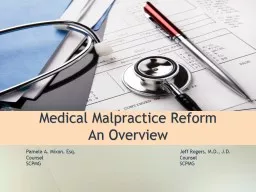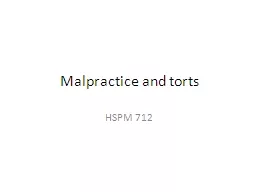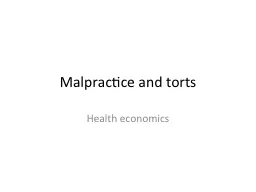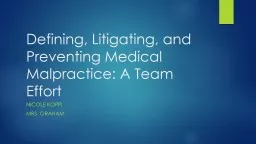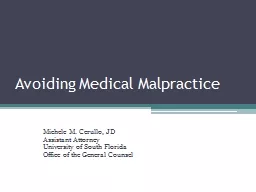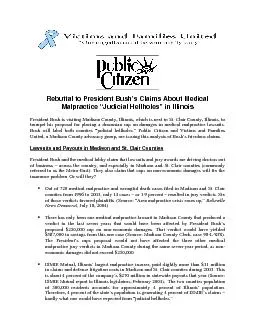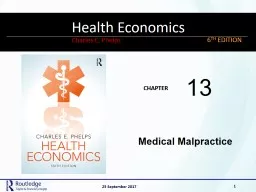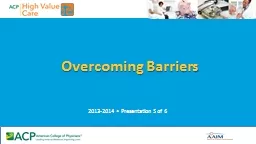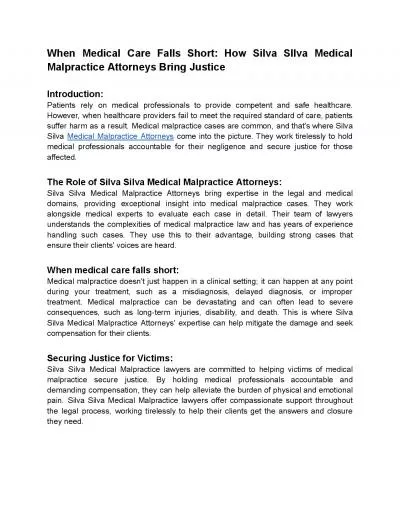PPT-Medical Malpractice Reform
Author : phoebe-click | Published Date : 2018-03-13
An Overview Pamela A Mixon Esq Jeff Rogers MD JD Counsel Counsel SCPMG SCPMG Add cartoon here Historical Background of Medical Malpractice Medical malpractice is
Presentation Embed Code
Download Presentation
Download Presentation The PPT/PDF document "Medical Malpractice Reform" is the property of its rightful owner. Permission is granted to download and print the materials on this website for personal, non-commercial use only, and to display it on your personal computer provided you do not modify the materials and that you retain all copyright notices contained in the materials. By downloading content from our website, you accept the terms of this agreement.
Medical Malpractice Reform: Transcript
Download Rules Of Document
"Medical Malpractice Reform"The content belongs to its owner. You may download and print it for personal use, without modification, and keep all copyright notices. By downloading, you agree to these terms.
Related Documents

